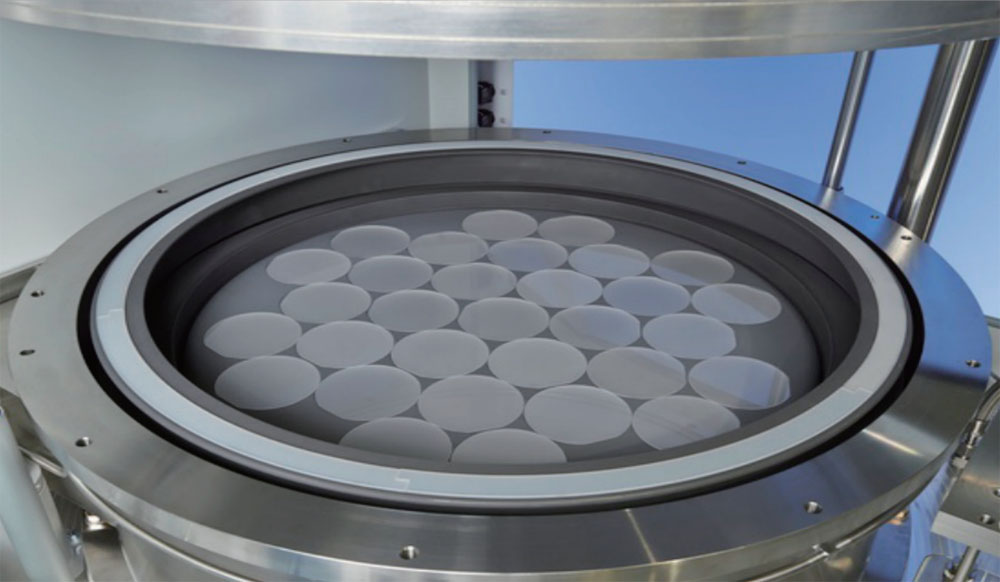
CVD SiC coating stands out as a game-changer in thermal management. Its exceptional thermal conductivity ensures efficient heat transfer, while its high-temperature resistance makes it reliable under extreme conditions. This silicon carbide coating also boasts remarkable durability, making it ideal for demanding applications. In Europe, where industries face strict regulations and pursue sustainability, such advanced solutions meet both performance and environmental goals.
- These coatings maintain stability and optical properties even under extreme temperature changes.
- They are widely used in aerospace, from missile nose cones to heat shields for space vehicles.
- Their lightweight yet strong structure enhances reliability and performance in critical systems.
Key Takeaways
- CVD SiC coating moves heat well, helping in important uses like electric cars and airplanes.
- It handles high heat and lasts long, making it great for tough conditions. This lowers repairs and makes parts last longer.
- European industries can use CVD SiC coating to follow strict rules and eco-friendly goals. It improves work while supporting green tech.
Understanding CVD SiC Coating
Defining CVD SiC Coating
CVD SiC coating, or chemical vapor deposition silicon carbide coating, is a thin, protective layer applied to surfaces. It is created through a chemical process that deposits silicon carbide onto a substrate. This coating is known for its exceptional strength, thermal stability, and resistance to wear. Industries like aerospace, energy, and semiconductors rely on it to enhance the performance and lifespan of their components. Its ability to coat complex shapes makes it a versatile solution for specialized applications.
Key Properties of CVD SiC Coating
CVD SiC coating offers several standout properties. It resists oxidation, corrosion, and wear, making it ideal for harsh environments. Its high thermal conductivity ensures efficient heat transfer, while its durability supports long-term use. These coatings also maintain their integrity under extreme temperatures, which is critical for industries like aerospace and energy. Additionally, advancements in CVD technology have improved the coating’s versatility, allowing it to meet the demands of modern applications.
How CVD SiC Coating is Manufactured
The manufacturing process for CVD SiC coating involves advanced techniques to ensure precision and quality.
- Automation and control systems monitor deposition parameters in real time, ensuring consistent results.
- Statistical process control (SPC) methods analyze data to optimize conditions, achieving tighter tolerances.
- Nanotechnology enhances coating properties, improving durability and reducing costs.
- Environmentally friendly methods, such as using green solvents, promote sustainability without compromising performance.
- Tailored precursor chemistry allows customization for specific applications, enhancing functionality across industries.
These innovations ensure that CVD SiC coating meets the highest standards of quality and performance.
Benefits of CVD SiC Coating for Thermal Management
Superior Thermal Conductivity
Efficient heat transfer is crucial in many industries, and CVD SiC Coating excels in this area. Its high thermal conductivity ensures that heat moves quickly and evenly across surfaces. This property is especially valuable in applications like electric vehicle (EV) powertrains, where managing heat effectively can improve performance and efficiency. By reducing the risk of overheating, this coating helps extend the lifespan of critical components.
In energy conversion systems, the material’s ability to handle high voltages and maintain thermal stability enhances overall efficiency. Whether in renewable energy or advanced manufacturing, this coating delivers reliable thermal management, even under demanding conditions.
High-Temperature Resistance
CVD SiC Coating thrives in extreme environments. It can endure high temperatures and harsh conditions without losing its integrity. This makes it indispensable in industries like aerospace, semiconductor manufacturing, and energy. For example:
- It withstands the intense heat of space vehicle heat shields and missile nose cones.
- Its thermal and chemical stability ensures consistent performance in energy systems.
This resilience allows industries to push the boundaries of innovation while maintaining safety and reliability.
Enhanced Durability and Longevity
Durability is another standout feature of CVD SiC Coating. Its resistance to wear, oxidation, and corrosion ensures long-term performance, even in challenging environments. This durability reduces maintenance needs and lowers costs over time.
In EVs, for instance, the coating protects components from thermal and mechanical stress, ensuring they last longer. Its robust nature also supports applications in renewable energy, where reliability is key to meeting sustainability goals. By choosing this coating, industries can achieve both performance and cost-efficiency.
Applications of CVD SiC Coating in the European Market

Aerospace and Defense
CVD SiC Coating plays a vital role in aerospace and defense industries across Europe. Its lightweight yet durable nature makes it ideal for high-performance components like radomes, mirrors, and structural parts. These coatings improve fuel efficiency and enhance the performance of aircraft and spacecraft. They also withstand extreme environmental conditions, ensuring reliability in critical missions.
In addition, CVD SiC Coating is used in missile nose cones, aircraft engine parts, and heat shields for space vehicles. Its high strength-to-weight ratio and resistance to extreme temperatures make it indispensable for thermal management systems. Countries like Germany, France, and the United Kingdom lead the adoption of these coatings, driven by their focus on innovation and research in high-tech sectors.
Automotive and Electric Vehicles
The automotive industry in Europe is rapidly evolving, with electric vehicles (EVs) at the forefront. CVD SiC Coating contributes to this transformation by enhancing the thermal management of EV powertrains. Its superior thermal conductivity ensures efficient heat transfer, preventing overheating and improving battery performance.
This coating also protects components from wear and corrosion, extending their lifespan. By reducing maintenance needs, it supports the industry’s push for cost-effective and sustainable solutions. As Europe continues to prioritize green mobility, CVD SiC Coating offers a reliable way to meet these goals while boosting vehicle efficiency.
Renewable Energy and Power Generation
Renewable energy systems demand materials that can handle high temperatures and harsh conditions. CVD SiC Coating excels in these environments, making it a key player in Europe’s renewable energy sector. It enhances the durability of components in solar panels, wind turbines, and energy storage systems.
The coating’s ability to resist wear and corrosion ensures long-term performance, even in challenging conditions. This reliability aligns with Europe’s commitment to sustainability and innovation in energy technologies. By adopting CVD SiC Coating, industries can achieve higher efficiency and contribute to a greener future.
CVD SiC Coating offers unmatched thermal management with its superior conductivity and durability. These qualities make it a perfect fit for European industries striving to meet strict regulations and sustainability goals. By adopting this advanced solution, businesses can boost performance, reduce costs, and stay ahead in innovation. Why wait? Start exploring its benefits today!
FAQ
What makes CVD SiC coating unique compared to other coatings?
CVD SiC coating offers unmatched thermal conductivity, high-temperature resistance, and durability. Its ability to coat complex shapes makes it versatile for various industries.
Is CVD SiC coating environmentally friendly?
Yes! The manufacturing process uses sustainable methods, like green solvents, ensuring high performance while aligning with Europe’s environmental goals.
Can CVD SiC coating be customized for specific applications?
Absolutely. Tailored precursor chemistry allows customization, ensuring the coating meets the unique needs of industries like aerospace, automotive, and renewable energy.